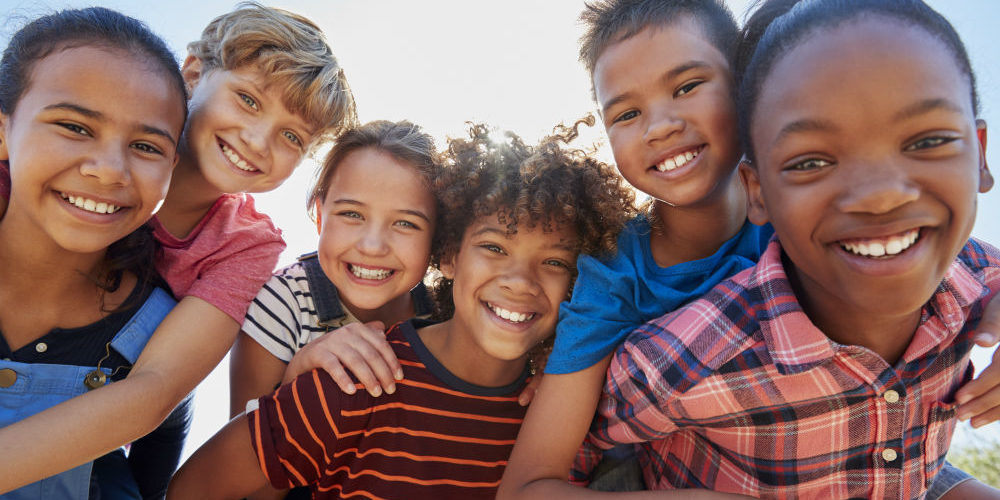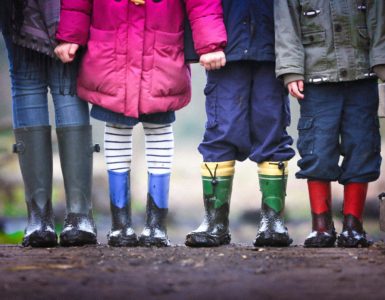A Maddening, Hopeful, and Heart-Wrenching, World We Can Change.
There aren’t just 140,000,000 case files sitting on desks today. No. A population, nearly the size of Russia, lives without security, without hope. According to UNICEF, today, there are 140 million babies under the age of 18 going to bed without their mommy or daddy. But, according to psychology, statistics hit hardest when phrased on personal terms (as opposed to mass figures paralleling the failing systems across the globe). How much more personal will this become before we step up and care?
The United States declared an opioid crisis when 47,000 people died in 2017. Our global orphan crisis is 2,978.72 times that number. The world is terrifying and we have a simple solution to several problems. Adopt. Nearly half the children who age out of the foster care system here at home end up addicted, incarcerated, or dead, within two years. The system systematically feeds itself. So what if just one more child knew someone loves them?
As the word “orphan” reflects a child who has lost one or both parents, we’ve shifted to using a more accurate phrase: waiting child. Although disease, starvation, drug use, and a variety of circumstances, induce premature death across the globe, 90-95 percent of children have at least one surviving parent who is unable to care for them (UNICEF). These children end up on the street, in orphanages, foster homes, or group homes, across the world, alone and in danger.
According to Dr. Bruce Perry, author of The Boy Who Was Raised As a Dog and a well-known child-trauma psychiatrist, young children within desolate situations (even within the United States) often reference their future as, “If I grow up, I want to be a teacher, a ballerina, a singer, a soccer player, etc.” Unfortunately, survival is an imminent problem that every child within the system faces. My heart aches for each baby whose mind dreams of a day they get to grow old because it is not an expectation nor a certainty.
How Many Children Are Adopted Each Year?
We have hungry and parentless children in every corner of the world, our vision is intentionally obscured to blatantly obvious needs. The way we turn our backs on an epidemic is a dark stain upon first-world nations. We have an abundance of resources; and adoption, although sometimes costly, is not something we have prioritized within our society. So to address the question head-on: why isn’t adoption more prevalent?
Internationally
Adoption statistics show a dramatic decline in international adoptions after 2007. As of 2016, only 5,648 children were placed via international (also known as intercountry) adoption. For 2017, international adoption rates dropped to 4,714. In 2008, international adoptions became much rarer within the United States as the U.S. government took protective measures alongside other countries to prohibit child-selling and unethical adoptions by instating the Hague Convention.
The Hague Convention essentially declares the country regulates their adoptions, to an extent which other countries agree their practices are as ethical as possible. Therefore, the U.S. will assure citizenship and safe transition for your children who were adopted. Although this was an awesome movement and cut down on obvious corruption, it did make adoption more difficult as countries closed. Additionally, every country that allows international adoptions has the option to close their program at any point. Thus, for several reasons, alongside travel costs and possible time consumption, people choose not to pursue international adoption.
Through Foster Care
As cited in an Adoption.com article, 50,644 children were adopted through the child welfare system in 2014. Although a vast majority of children adopted (other than by a stepparent) are adopted through the child welfare system, adoption statistics must rise dramatically to fix the issues at hand. According to the Administration for Children and Families, there are 400,000 children in care right now. 100,000 of those children cannot reunite with their biological families and await permanent placement. Department of Social Services and Child Protectives Services are overloaded.
I interned for a sheriff’s office in gang-riddled south Florida over the course of my high school career, and every day I saw police officers who were overworked and tired of the violence they saw. A caseworker once mentioned how our county alone removed and rehomed at least six children every day. But there were never six waiting families available.
Adoption statistics don’t show an overwhelming number of adoptions because a disintegrating system can’t birth healthy relationships fast enough. While half of the children spend five or more years in the system without being adopted, court dates move slowly. People, whether birth parents or foster parents, don’t always put their full weight into whatever plans the courts dictate (Thank goodness for those who do). In turn, why rush children through termination of parental rights when there are not nearly enough parents waiting with open arms? Please allow yourself to feel the weight each child carries under the foster care world’s fractured plans.
However, as cited later in this article, children who are adopted by their foster parents (which offers stability and a period for bonding) end up more settled, with lower disruption rates.
Domestically
Domestic adoptions can be closed and private, therefore accurate statistics are not readily available. However, common reasons only two percent of American adults pursue adoption are costliness, time, and lack of information.
Time Frame Statistics
Adoption is a song, with a stable melody of waiting, punctuated by frequent periods of frenetic activity. Depending on where hopeful families adopt from, timelines vary greatly.
Foster care depends on the mercy of the courts for its handling. Jennifer Mellon says, “On average, it can take families a year to 18 months to complete the entire process from fostering to adopting.”
For international adoption, the wait can be anywhere from one to three years. Depending on immigration laws, the relationship between countries, and agency proactivity, the answer changes for each country every year. As of 2019, Bulgaria and China take far longer than Colombia. However, that may switch at any point.
Domestic infant adoption’s time efficiency largely depends on being matched with an expectant mother. This can take anywhere from a few short months to a couple of years. All of which is something an agency should talk any of their hopeful families through.
Please reference this article for more adoption statistics surrounding the process’ duration.
Post-Adoption Statistics
After placement within a forever family, a couple of home visits are standard. However, as studies surrounding mental health continually gain notoriety, science continually recognizes how deeply childhood events (such as adoption) affect the psyche. Research shows that adoptees are four times as likely to commit suicide as children raised in a healthy relationship with their biological parents. It’s a devastating number.
Yet where does that leave the children languishing in the system? More than 60 percent of males who age out of foster care end up incarcerated within six years. Ninety-four percent of all those who turn 18 without a home do not complete any higher education. Additionally, 20 percent of the 23,000 children who turn 18 while waiting for parents will become homeless as a birthday present that year. I can’t tell you how to fix the system, just that there are broken and hurting people.
Another reason I truly believe prospective families do not pursue adoption is the fear of disruption. A disrupted or dissolved adoption is the terminology depicting when an adoptive family legally breaks the ties with their adopted child. This occurs for several different reasons, the most common of which is a weak support system for the adoptive family. According to a well-researched post on the Adoption.com Forum:
“Adoption disruption and dissolution rates have remained relatively consistent over the past 15 years, ranging between 10 and 20 percent, depending on the type of adoption (Boyne, Denby, Kettenring, Wheeler, 1984; Groze, 1986; Barth and Berry, 1988). Infant placements have the lowest rate of disruption, at less than one percent (Barth and Berry, 1988).
“As for children placed out of the public child welfare system, the risk of disruption increases as the child ages (Boyne, Denby, Kettenring, Wheeler, 1984; Barth and Berry, 1988). The overall decrease in disruption percentages in 1988 from 1984 can be traced to the introduction of post-adoption services, an important factor in containing the number of adoption disruptions…
“Parents cite two types of information as best preparing them for parenting their adopted child: first, more specific, child-centered information prepares them for parenting better than overview presentations on adoption and parenting in general. Second, meetings with other foster and adoptive families, including group sessions with the child’s current caretaker, increase adoption stability (Berry, 1997). Complete, realistic histories and assessments of the child’s prospects are necessary to the stability of the adoption (Nelson, 1985; Berry, 1997)…”
However, according to a 2007 survey, 97 percent of children ages 5 and older knew about their adoption. Part of the contentedness found within adoption statistics today is how our culture now readily accepts the information an adoptive family offers. Semi-open adoptions or transracial adoptions, where it’s very openly recognized the child has different genetic contributions, ensure the child knows he or she is adopted. Thus, formulating an open and honest relationship with yesterday’s building blocks and today’s identity.
Birth Parent Statistics
Some parents truly have no choice in whether they parent, whether due to outside circumstances or poor situations separating them from their children. Data for continuing lifestyle choices are incredibly difficult to pinpoint because of privacy concerns. However, there are also biological parents who choose not to parent of their own volition. Research suggests that those who choose adoption go on to have incredibly fruitful lives.
Why Haven’t We Done So Much More?
In complete honesty, soul-pricking information makes us feel worthy. Love and empathy develop out of the same hormone: oxytocin. It’s a pleasant emotion and my goodness, we cater to it. Millions of people read about the hundreds of thousands starving, sleeping alone, living with unmet hopes, on Facebook every morning as they eat their toast. Maybe shed a tear. Then, we go to work like nothing is wrong in the world. Empathy swells, satiates the innate human desire for love, and we do nothing. Good intentions and social media have deadened our need for intimacy and replaced it with a constant crave for interaction.
How Can We Change the Statistics?
Adoption statistics show contrasting points within reality. The amount of compassion and good within the world, paralleled with devastation and rejection. Any time human beings become mere statistics, the dark portion on a graph, apathy wins. We lose our humanity as we disregard theirs. Caroline Bailey, a child welfare agent wrote, “Change stops when apathy begins.” Thirty percent of Americans have considered adopting, however, only two percent acted on it. Somewhere between good intentions and a fruitful execution lies our discordant reality. One-hundred and forty million children need homes. They need prayer, food, love, and parents. Whether you add to the statistic of loving birth mothers who live fruitful lives, adoptive parents multiplying international adoptions, or of mentors stepping up for foster children, data will reflect the shift within our culture.




